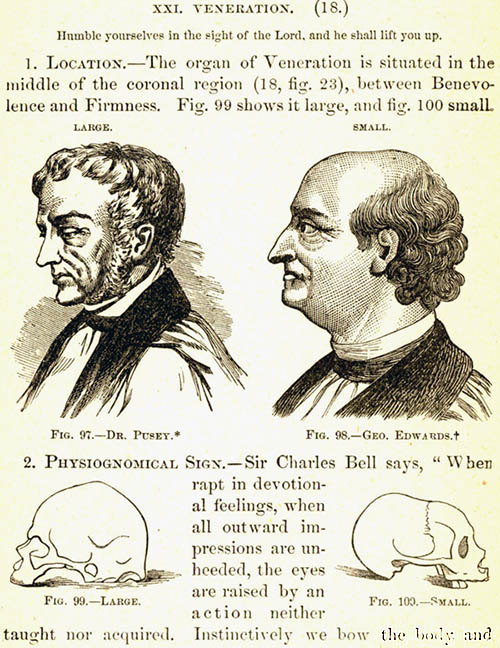American Phrenology
Today, an old book offers a parable of our times. The University of Houston's College of Engineering presents this series about the machines that make our civilization run, and the people whose ingenuity created them.
So many people shave their heads these days. I wonder if we aren't about to see a resurgence of the old practice of phrenology -- the art of reading character in the contours of the human head. For, although science reveals much more about the world we live in today, pseudoscience also remains alive and well.
Last month I found an old phrenology treatise by Samuel Wells. Wells, it seems, was the heritor of the American school of phrenology. It'd been founded by three siblings, Lorenzo, Orson, and Charlotte Fowler. Born in the early 1800s, they took up phrenology while they were still in school. They began practicing it, and then went on to form a large phrenology publishing house.
Samuel Wells was younger. He married Charlotte, six years his senior, as he finished medical school. Then he left medicine to join their publishing industry. He and Charlotte took over after the brothers died, and they ran things almost into the 20th century.
My book is an 1891 copy of How to Read Character: A New Illustrated Hand-book of Phrenology and Physiognomy. The Fowler/Wells Company had first published it thirteen years earlier. Who actually wrote it is a bit hard to tell. All we know is that Samuel Wells filed for the copyright. So let's look inside.
Character, it says, is located in certain portions of the brain. These in turn dictate the shape of the skull, depending upon how fully each is developed. Reading the shape of the skull is an empirical science, we're told, built up on years of refinement. But then we're given the data, and now the story becomes pretty frightening.
The data consist of the author's own drawings. Example: we're shown skulls of a male and female (where the adjective white is implied but not stated) along with skulls identified as Negro and American Indian. The features that Wells imagines for each are built into the drawings.
Throughout the book, we find countless pairs of heads: A sketch of Emanuel Kant shows a high protruding forehead. Next to him is a "Negro" with a low forehead. This is evidence that people with Kant's forehead are highly reflective and those without it are not. The head of Harvard naturalist Louis Agassiz is supposed to exemplify perception. Alas, that's the same Agassiz who argued that the Black race was the result of separate creation by God.

The head of a beloved clergyman head displays the property of veneration. In contrast, Wells offers the noted 18th-century ornithologist, George Edwards, whose veneration Wells finds wanting.
The harder Wells tries to prove his case, the clearer it is that his conclusions precede his data. This old book, with its pages of manipulated information, reflects the world around us. People everywhere are noisily "proving" political and religious beliefs with after-the-fact evidence. And, in our fact-filled world, one can find fragmentary evidence in support of almost any claim.
I'm John Lienhard, at the University of Houston, where we're interested in the way inventive minds work.
How to Read Character: A New Illustrated Hand-Book of Phrenology and Physiognomy, for Students and Examiners; with a Descriptive Chart. (New York, Fowler & Wells Co., Pubs., 1891).
For more on phrenology, click here.
To see Wells' phrenological chart, click on the thumbnail:

Wells explaining how to identify the virtue of veneration from the shape of a skull.
